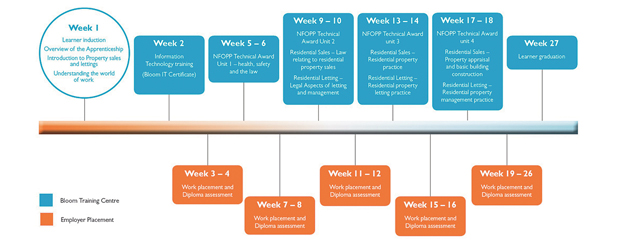In the last few weeks, the National Apprenticeship Service (NAS) revealed to FE Week that a review was underway into short apprenticeships. Delivery models, the NAS said, which do not come up to scratch with specific guidance in the Specification of Apprenticeship Standards for England (SASE) may need to change or face the loss of funding. However, the body also said the review will judge some cases as “appropriate”, despite not meeting the SASE.
FE Week takes a closer look at two different delivery apprenticeship models being advertised at present.
SQi training provider pays the wage for 15 week apprenticeship
A training provider is offering free work placements to businesses including the cost of the wage for an apprentice.
SQi Watford Ltd (SQi) has revealed to FE Week it advertises free placements and pays the wage as an incentive to businesses to take on apprentices.
But West Herts College and its subcontractor Best Practice Training and Development (BPT) say the arrangement is “compliant” with Skills Funding Agency (SFA) guidelines.
BPT is subcontracted by West Herts College to provide training to apprentices. They then pay SQi but insist it is not from their SFA pot.
In August, the NAS, reiterating a document from the SFA, said providers should not use money from the SFA to pay apprentices.
In Paragraph 66 of the SFA’s Apprenticeship Funding Requirements 2011/12 document, it reads: “Apprenticeship funding cannot be used to pay Apprenticeship wages, as its primary function is to fund learning. Therefore, where the Provider is the employer, or an associate organisation is the employer, the Provider must be able to positively demonstrate that Agency funds are not being used in this way.”
SQi offers Level 2 Business and Administration apprenticeships over a 15-week course for 16 to 18-year-olds. It includes a 10-week work placement, with apprentices placed into local businesses “free-of charge” by SQi, who pay £2.60 per hour apprenticeship minimum wage for a 30-hour week.
Mikki Davis, apprenticeship manager at SQi, said: “SQi pay the wages. People find it very difficult to get work placements.
“It’s tight and businesses don’t have money to pay apprentices. We couldn’t find placements when they (businesses) had to pay. We are trying to bring that (businesses paying the wage) into effect.”
Duncan Murray, the director of skills and enterprise at the college, said BPT is “registered separately at Company House” to SQi. A check by FE Week found they share the same two directors and registered address.
Mr Murrary added: “West Herts College is aware SQi pay the wages of apprentices registered with us, and this is completely compliant with SFA guidelines. Our compliance team is perfectly happy with the arrangement as is the NAS and their Best Practice team.”
David Allenstein, director at BPT, said SQi are funded by a different arm of BPT, which does not involve SFA funding.
He said: “SQi does not draw funding from the Skills Funding Agency for the payment of apprenticeship wages. This area is funded by the commercial training arm of Best Practice Training.”
The NAS are investigating the case.
Bloom offer Estate Agents 26 week Level 3 apprenticeships
Changes will be made to a delivery model to ensure it is an “accurate reflection” of its outcome.
Training provider Bloom offers Level 3 apprenticeships in Sale of Residential Property and Letting and Property Management, which appear to take place in half of the time of the suggested framework.
As set out by Asset Skills, the Sector Skills Council, in their Property Services apprenticeship framework document, it is “envisaged that the apprenticeship will take 12 months” to complete.
However, the courses delivered by Bloom are said to take place over “26 weeks” which includes “a mixture of classroom based activity and work placements” with two sales and two lettings models run each year.
A schedule on the firm’s website shows a typical plan, which details the mix of work at the Bloom Training Centre and on work placements.
Following an induction week and week two on IT training, the apprentice is put on the placement for week three and four. The programme continues in the centre completing three NFOPP units, interspersed with time on placements.
In total, the apprentice will spend 16 weeks on placement and the remaining 10 weeks working to qualifications. A final 27th week is for graduation.
However, Steven Proudfoot, Chief Operating Officer at Asset Skills, said: “It’s an ambitious timeframe. Our concern is to ensure everything is done correctly and the right learning hours are allowed and it’s being delivered effectively.
“We have been working with Bloom and delivered 10 to 12 certificates for Bloom, which have taken nine months to complete.
“We are working with them to make sure their website is updated to show it is a more accurate reflection to the actual model.”
He added: “We always want to work with the providers and the sector to make sure the model is the best for the candidate.”
Di McEvoy-Robinson, director at Bloom, said they set the 26 week model after talks with the employers in the sector.
However, they are now working to rework the model.
She said: “However, the reality for the first 14 to 15 candidates is that it’s taken nine to 10 months. If some take 15 months, then that’s fine too. It’s about meeting the candidates individual needs.”









Simple Question for NAS: What percentage of 16-18 accelerated apprentices gain permanent employment with the companies they are placed with?
(Not including existing employees of multi-billion £ firms).
Come on NAS, you collect enough data, let’s see some output for all the input.
Scott Upton, Sandwell College
The answer is simple. If it does not meet SASE then it does not qualify as an apprenticeship. In a drive for starts NAS is killing the valuable apprenticeship brand. This is history repeating the errors of the TECs and the LSC. The NAS and these providers know the cost of every learning aim and the value of none of them